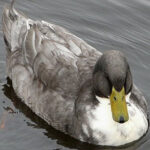
The Swedish duck has its origins in the early to mid 1800s in Pomerania, a region on the Baltic Sea that was once controlled by Sweden. The breed first came to the United States in 1884. The only variety listed in the American Standard of Perfection is the blue variety, accepted in 1904. Physical Attributes […]
Continue Reading
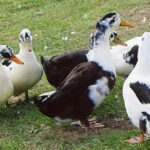
The Ancona duck originated in the 1910s, yet remains a rare breed that has never been listed in the American Standard of Perfection. Cackle Hatchery® is one of its few long-term breeders, having maintained Ancona genetics since 1977. Physical Attributes Anconas are typically white and black, or any combination of white and color, in irregular […]
Continue Reading
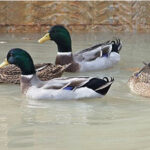
Ducks, like other birds, periodically replace their worn-out feathers with a full set of fresh plumage in a process called molting. Young ducks go through two consecutive molts. After maturity, the hens renew their feathers annually, while the drakes go through two annual plumage changes —the eclipse and nuptial molts. Most domestic duck breeds in […]
Continue Reading
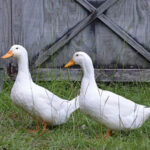
The White Pekin is the quintessential duck that most people think of when they hear the word “duck.” This big white duck derives from an ancient Chinese breed, the name of which translates as “ten-pound duck.” The first Pekins in the United States arrived in the early 1870s, hatched in the Chinese city of Peking, […]
Continue Reading
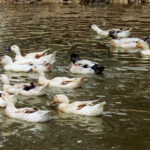
The Welsh Harlequin duck was developed in Wales in 1949 from a pair of light colored sports hatched from Khaki Campbell ducks. The breed was first imported to the United States in 1968 and admitted to the American Standard of Perfection in 2001. Physical Attributes Welsh Harlequins are slightly heavier than Khaki Campbells, but similar […]
Continue Reading
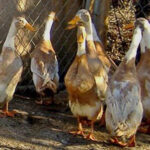
The Runner duck is an ancient breed known in the East Indies for at least 2,000 years. Its excellence lies in being a terrific layer that’s agile enough to easily herd over long distances. Runner ducks were traditionally kept in pens overnight. After the hens laid their eggs in the morning, the ducks were herded […]
Continue Reading
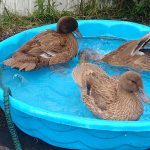
The Khaki Campbell duck came about when Adele Campbell of Gloucestershire, England, wanted a dual-purpose duck that laid well, but with a good-size body for roasting. The resulting duck breed first appeared in the late 1800s. The ducks’ buff-color plumage reminded Ms. Campbell of army uniforms, hence the name Khaki Campbell. Introduced to the United […]
Continue Reading
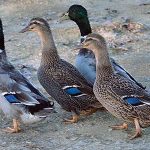
The Rouen duck originates from France, where farmers have raised the breed for hundreds of years. Rouens arrived in the United States in 1850 and were admitted to the American Standard of Perfection in 1874. Physical Attributes Rouens look like Mallards, only they are considerably larger. And they don’t fly nearly as well, making them […]
Continue Reading
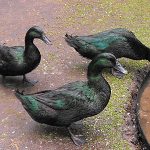
Mystery shrouds the origins of the Cayuga duck. Among the many legends, one claims the breed came from a pair of wild ducks in New York. Another claims the Cayuga derives from the ancient Black duck of Lancashire in the United Kingdom. Whatever the case, the duck gets its name from a Native American tribe […]
Continue Reading
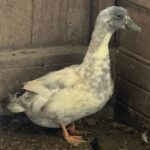
- Splash Swedish Duck – Sold as Baby Ducklings Only
Shipped Mid Feb thru June.
Minimum of 3 to ship.
Continue Reading










